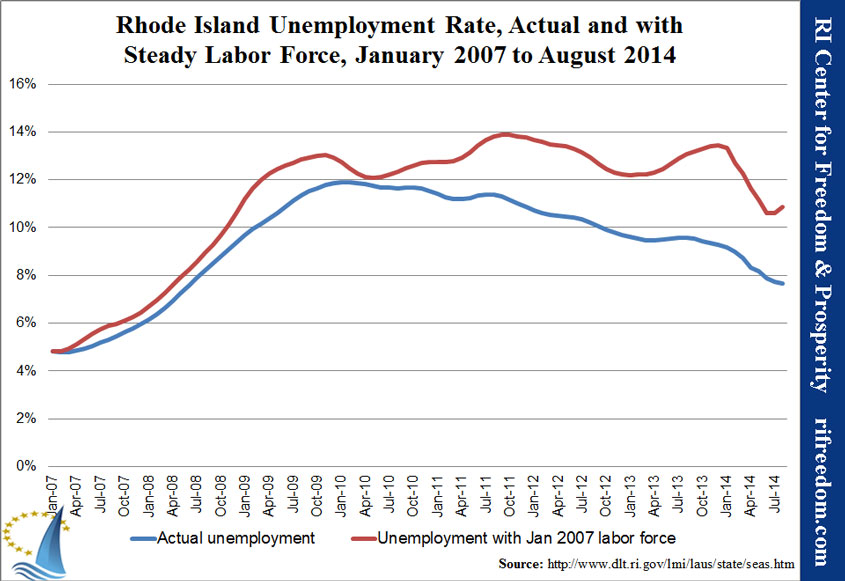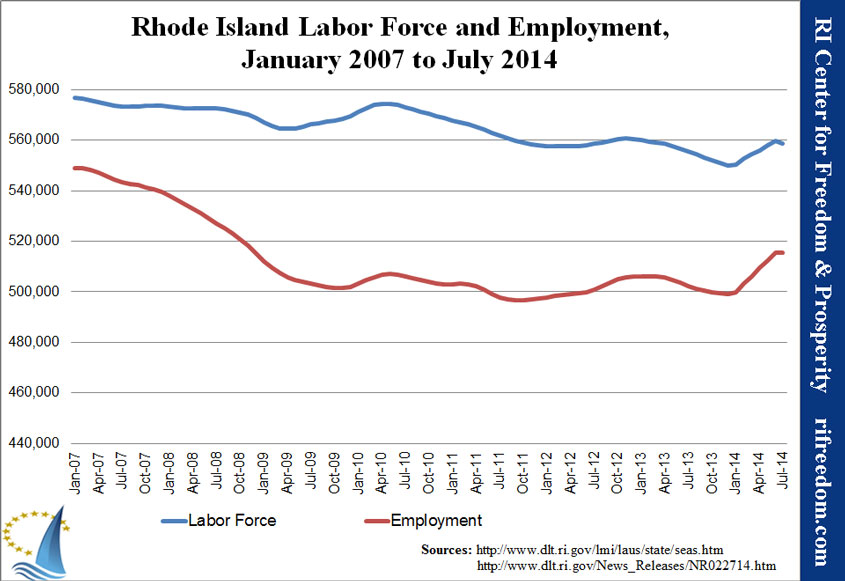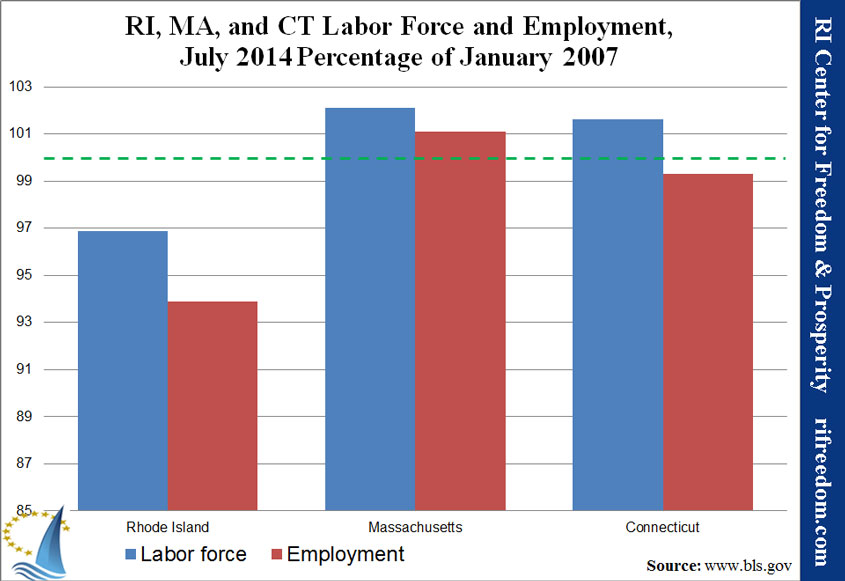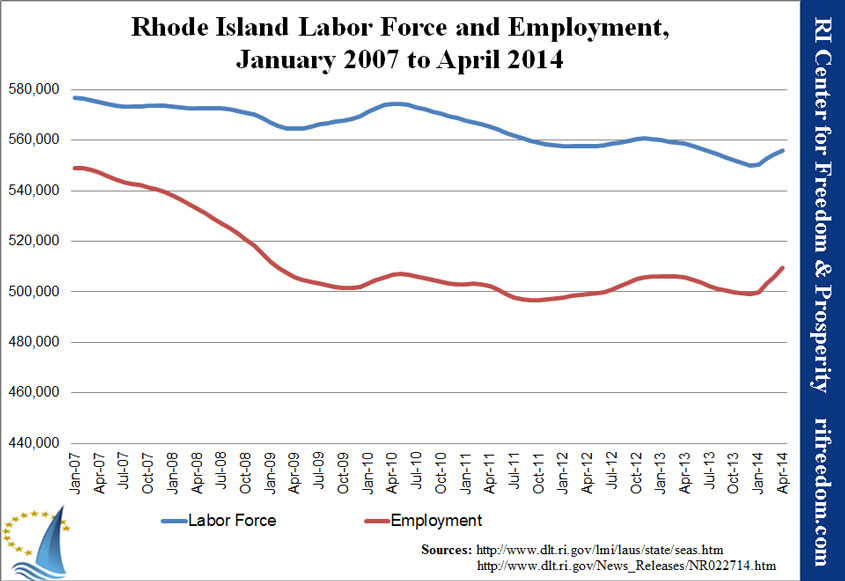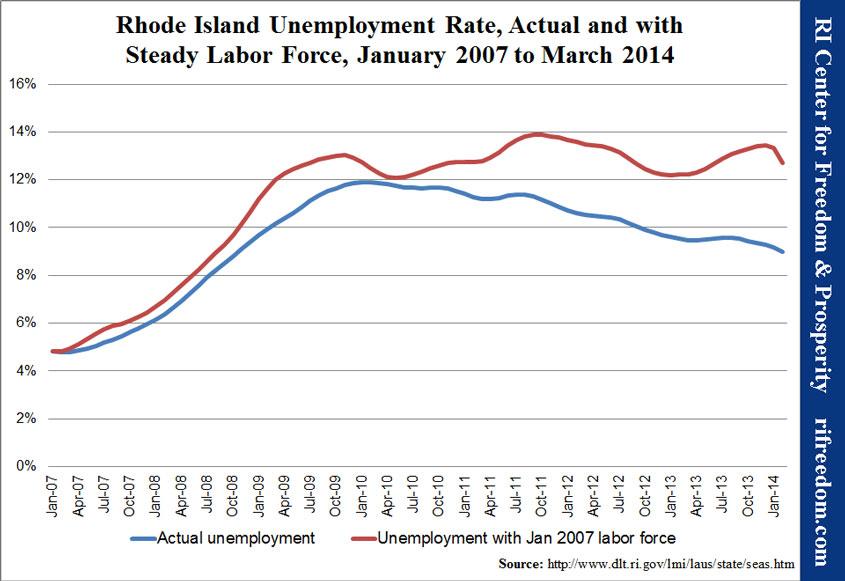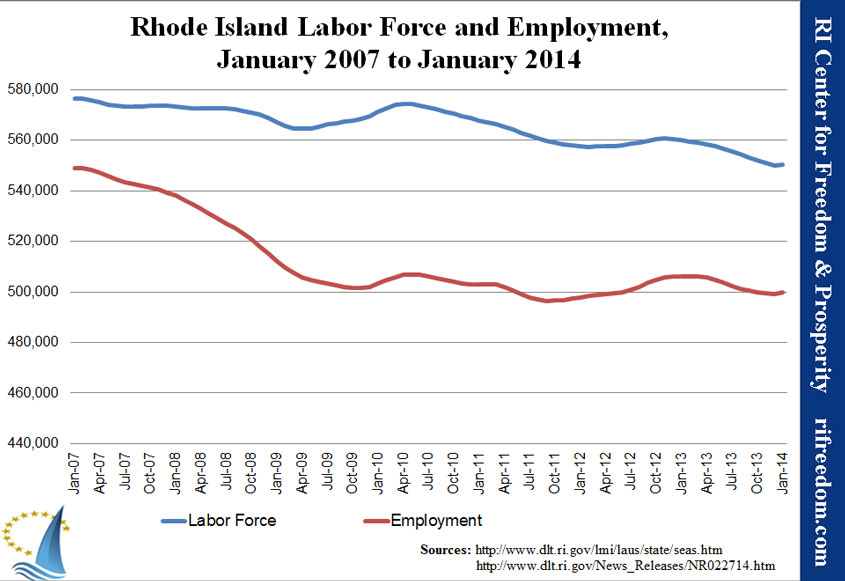Download report (PDF)
Executive Summary
In 2004, the State of Rhode Island enacted Renewable Energy Standards (RES) through legislation known as the Clean Energy Act. Many of the assumptions used to justify the Act turned out to be largely inaccurate, and implementation of its mandates will exact more costs to the Rhode Island economy, with only limited benefits, if any.
This study estimates the economic impact of maintaining RES mandates over the next six years in the Ocean State. Rhode Island’s energy prices are already among the highest in the nation, and the state’s poorly rated business climate hardly needs another factor to exacerbate it.[i]
The major findings of this study show:
- The current energy mandates will raise the cost of electricity by almost $150 million for the state’s consumers through 2020.
- RI’s electricity prices will unnecessarily rise by an additional 1.85% by 2020.
These increased energy prices will hurt Rhode Island’s residents and businesses and, consequently, inflict harm on the state’s economy. In 2020, the RES is expected to:
- Increase unemployment in an already-weak
jobs market.
- Reduce real disposable income for families.
- Decrease private investment in the state.
- Increase the overall energy costs of households, businesses, and industries.
Rhode Island is not alone. Nationally, government mandates that require electric utilities companies to use wind and solar power instead of more-affordable hydrocarbons have left ratepayers with sticker shock in state after state, according to a recent Centennial Institute study.[ii] Average electric rates are 21% higher in the 30 states with mandates than in the 20 states without them, according to expert Kelly Sloan.
Faulty Assumptions
In 2004, at the height of the manmade global warming campaign, a number of assumptions were broadly promoted as reasons for states, our nation, and other countries to enact and implement strict energy guidelines that would limit carbon dioxide emissions into the atmosphere. Nine years later, there are strong arguments to suggest that most of the assumptions that were used as a basis for the energy mandates imposed in Rhode Island were off the mark. The following are among the assumptions that are now openly in dispute:
- Renewable energy would be more cost-efficient. Renewable energy costs remain significantly higher than conventional sources, with few near-term expectations for change.[iii]
- Renewable energy would be abundantly plentiful. The inconsistency of wind and solar sources creates significant periods of non-production, often requiring additional fossil-fuel plants to be built as “backup” systems.[iv]
- Fossil fuel sources would become scarce in the near future. Technological advances, in procurement, transportation, and consumption, continue to expand available energy sources, especially for the United States, which is projected to enjoy an extended, energy-self-sufficient period as the lead producer of oil.[v]
- Fossil fuels would become increasingly expensive. Coal and natural gas continue to be the least expensive sources of electricity and will continue to be the most cost-efficient sources in the coming decades. As America extracts and refines more and more of its vast reserves, oil prices could also see a significant decline.[vi]
- Renewable energy would spur a boom in green jobs. There has been no such boom; many once-promising green companies have gone out of business because of low demand for high-priced energy sources. Some European countries that invested heavily in the “green revolution” suffered more job losses than gains.[vii]
- Renewable energy is better for the environment. This may not be true in the near term. The need for backup power plants decreases environmental efficiency. Better air quality can be achieved via natural gas, which is significantly cleaner than coal.[viii]By contrast, “energy sprawl” has become a popular term among environmentalists to describe the massive amount of land or sea area required for wind or solar farms, which many consider eye pollution.[ix]Furthermore, the miles of transmission lines required for such technology often cut through pristine landscapes,[x]and windmills are a danger to birds and bats.[xi]
- Global warming is an immediate danger to our Earth. With recent reports that global temperatures have flattened over the past 17 years, despite increasing overall carbon emissions, it is now much more of an open question as to whether or not restrictive and punitive energy mandates will actually make a decisive difference in global temperatures.[xii]
Specific Findings
- Compliance costs for RI’s RES requirements is already millions of dollars per year and expected to continue climbing, with much of the burden passed on to energy consumers.
- The intermittent nature of common renewable energy sources means that the standards may not even succeed in their intended purpose of reducing greenhouse gas and other emissions.
- Rhode Island’s RES mandate will cost Rhode Island $21.4 million per year by 2020.
- At the end of this decade, electricity prices will be 0.24 cents per kilowatt-hour (kWh) higher because of the RES.
- These increases will cost the state 105 jobs and $4.6 million in investment dollars and lower the real disposable income by $33.0 million.
Deepwater Wind
The additional negative economic projections related to the implementation of the Deepwater Wind project are not included in these findings. The purpose of this report is to project the general adverse effects of continuing with existing RES mandates; the Deepwater project represents a specific choice to implement one or more of those mandates.
The RI Center for Freedom & Prosperity plans to run the estimated $350–500 million in additional costs to ratepayers through its RI-STAMP modeling tool and release those projections in the coming weeks. It is reasonable to expect the negative effect of this single, specific project to be significantly larger than the general effect of existing RES policies.
Policy Recommendations
Given the shifting landscape of the climate change debate and unchanging condition of Rhode Island’s economy, the question for Rhode Islanders is whether or not the state should loosen its energy mandate policies. This study shows that, if left unchanged, current policies will indeed cause further harm to our state’s already struggling economy.
Even if recent questions about the true global climate effect of carbon emissions prove unfounded, is it realistic to think that restrictive energy policies in the Ocean State will have any impact at all on the global climate, considering its small geographic and industrial footprint? Or should the state seek to roll back some of the burdens these mandates are projected to impose on families and businesses?
If the General Assembly is willing to consider reform of existing RES laws, our Center recommends:
- Enact the Electricity Freedom Act, repealing the state’s renewable energy standards (see Appendix B for model legislation).
Require that the state investigate and utilize methods of predicting and tracing the economic effects of renewable energy standards on Rhode Island, prior to renewed implementation.
[i] RI Center for Freedom & Prosperity, “Report Card on Rhode Island Competitiveness,” on which Rhode Island receives a D+ for energy issues overall. <www.rifreedom.org/2013/03/second-year-report-card-lack-of-bold-action-lack-of-improvement/>
[ii] Sloan, Kelly. “Bad Bargain: How Renewable Energy Mandates Pick Your Pocket.” Centennial Institute. 2013. <www.ccu.edu/uploadedFiles/Pages/Centennial_Institute/Policy%20Brief%20No.%202013-3.pdf>
[iii] “Levelized Cost of New Generation Resources in the Annual Energy Outlook 2013.” U.S. Energy Information Administration. January 2013. <www.eia.gov/forecasts/aeo/electricity_generation.cfm >
[iv] Vartabedian, Ralph. “Rise in renewable energy will require more use of fossil fuels.” Los Angeles Times. December 9, 2012. < articles.latimes.com/2012/dec/09/local/la-me-unreliable-power-20121210>
[v] Smith, Grant. “U.S. to Be Top Oil Producer by 2015 on Shale, IEA Says.” Bloomberg. November 12, 2013. http://www.bloomberg.com/news/2013-11-12/u-s-nears-energy-independence-by-2035-on-shale-boom-iea-says.html
[vii] Green, Kenneth P. “The Myth of Green Energy Jobs: The European Experience.” American Enterprise Institute Energy and Environment Outlook. February 2011. < www.aei.org/article/energy-and-the-environment/the-myth-of-green-energy-jobs-the-european-experience>
[viii] De Gouw, J.A., D. D. Parrish, G.J.Frost, and M. Trainer. “Reduced Emissions of CO2, NOx and SO2 from U.S. Power Plants Due to the Switch from Coal to Natural Gas with Combined Cycle Technology.” Earth’s Future. < onlinelibrary.wiley.com/doi/10.1002/2014EF000196/abstract>
[ix] Galbraith, Kate. “Study Warns of ‘Energy Sprawl’.” The New York Times. August 26, 2009. <green.blogs.nytimes.com/2009/08/26/study-warns-of-energy-sprawl/?_r=0>
[x] Wood, Daniel B. “Green power may ruin pristine land in California.” The Christian Science Monitor. April 24, 2007. <www.csmonitor.com/2007/0424/p02s01-wogi.html>
[xi] Irfan, Umair. “Bats and Birds Face Serious Threats From Growth of Wind Energy.” The New York Times. August 8, 2011. < www.nytimes.com/cwire/2011/08/08/08climatewire-bats-and-birds-face-serious-threats-from-gro-10511.html?pagewanted=all>
[xii] Hollingsworth, Barbara. “Climate Scientist: 73 UN Climate Models Wrong, No Global Warming in 17 Years.” CNS News. September 30, 2013. < www.cnsnews.com/news/article/barbara-hollingsworth/climate-scientist-73-un-climate-models-wrong-no-global-warming-17>
Download report (PDF)



